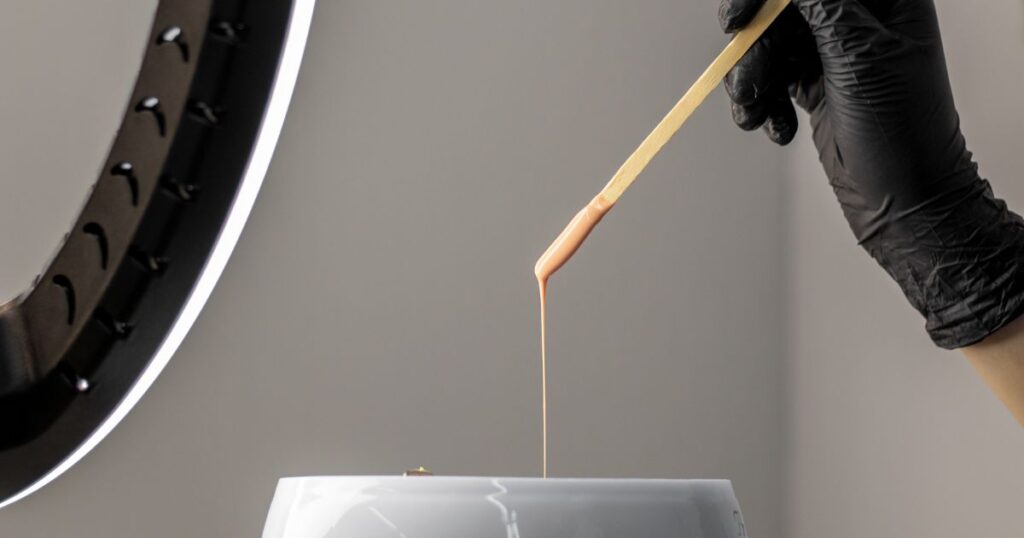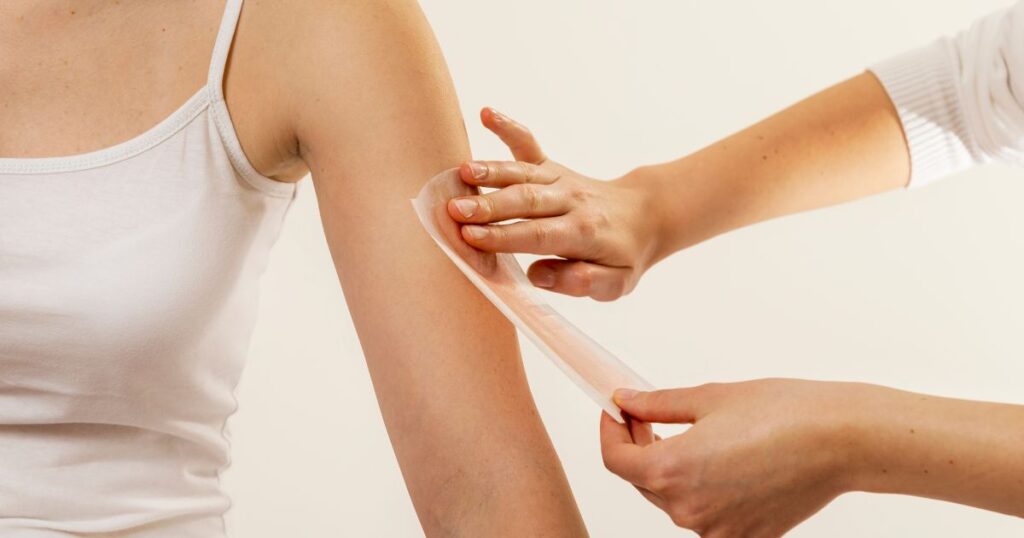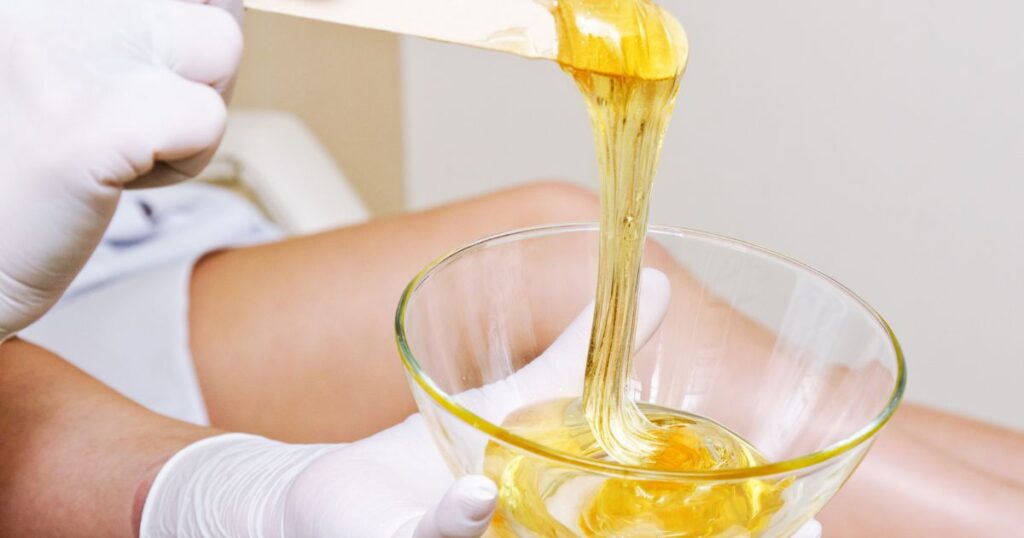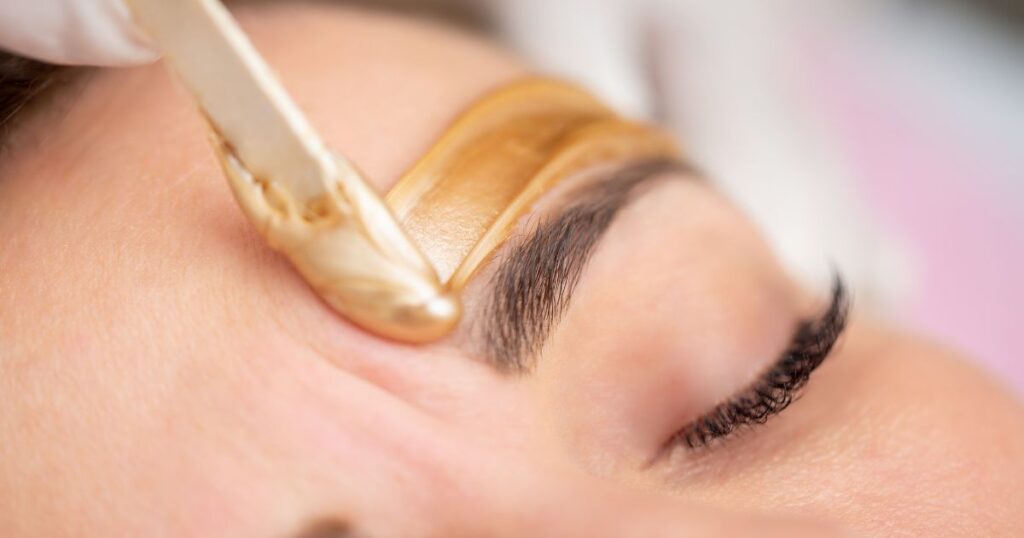Waxing, while an effective method of hair removal, is often associated with pain. However, with the right techniques and precautions, you can transform your waxing experience into a more tolerable and even pain-free process. In this blog post, we’ll explore practical tips to make waxing less painful, covering different body areas and addressing common concerns.
What Is Waxing?

Waxing is a temporary hair removal method that involves using hot wax to remove hair from the root, providing smoother skin for an extended period, typically up to six weeks. This method is preferred for its long-lasting results compared to shaving.
Top 10 Ways to Make Waxing Less Painful:

Seek a professional who is experienced in waxing:
- Choosing a reputable salon or spa with experienced professionals ensures proper wax application and efficient hair removal, minimizing pain and irritation.
Exfoliate the area before waxing:
- Gently exfoliate the skin before waxing to remove dead skin cells, allowing the wax to grip the hair effectively without causing unnecessary pain.
Dull the nerves:
- Apply a numbing cream or ice packs to the area before waxing to dull the nerves and reduce sensitivity, making the waxing process more tolerable.
Reduce acidity:
- Cut back on smoking, caffeine, and acidic foods a few days before waxing to reduce body acidity, which can contribute to increased pain during the process.
Use the right type of wax:
- Opt for cold wax instead of strip wax for a gentler experience. Cold wax only removes the hair, not the root, making it less painful on the skin.
Use a body scrub:
- Maximize the exfoliating benefits of waxing by using a body scrub before your appointment to remove dead skin cells and smoothen the skin.
Take a pain reliever:
- Consider taking ibuprofen or acetaminophen before your waxing session to alleviate pain. Follow the recommended dosage for effective pain relief.
Use quality wax:
- Choose high-quality wax to avoid harsh effects on the skin. Opting for professional-grade waxes can significantly contribute to a less painful waxing experience.
Be sure to breathe:
- Practice deep breathing during the waxing process to relax your muscles and make the pain more bearable. Holding your breath can intensify the pain.
Have realistic expectations:
- Acknowledge that waxing may not be entirely pain-free, but by using numbing creams or following the mentioned tips, you can make it a more tolerable experience.
Does Waxing Hurt? Additional Tips for a Pain-Free Experience:

Time it Right:
- Consider the length of your hair for proper waxing grip and schedule your session based on your menstrual cycle for a pain threshold advantage.
Prepare Yourself:
- Lightly exfoliate before waxing to remove dead skin, ensuring better wax adhesion. Take a warm bath to open pores and soften hair follicles for effortless waxing.
Perfect the Technique at Home:
- Practice applying wax smoothly and pulling the skin tight to maximize coverage. Deep breathing during the process can help reduce pain.
Exfoliate Before Waxing:
- Use a body scrub a few days before waxing to eliminate extra dry, dead skin, facilitating proper hair removal during the waxing process.
Soak in a Warm Bath First:
- Open up pores and soften hair follicles by soaking in a warm bath for 20-30 minutes before waxing, ensuring a more comfortable experience.
Breathe:
- Focus on breathing deeply and exhaling when the wax strip is pulled, relieving tension and making the waxing process less painful.
Ensure the Hair is of the Right Length:
- Check that the hair is approximately 1/4 inch long for effective waxing. Too short or too long hair can make the process more uncomfortable.
Wear Loose Clothes Afterwards:
- Allow the waxed area to breathe by wearing cotton underwear and loose pants or skirts for 24-48 hours post-waxing, preventing irritation from tight fabrics.
Stop Shaving:
- Avoid shaving between wax sessions, as it can make the hair more resistant to waxing. Stop shaving at least three weeks before your waxing appointment.
Don’t Wax If You Have a Sunburn:
- Skip waxing if your skin is sunburned, as it can further irritate the skin. Wait until your skin has fully recovered before scheduling a waxing session.
Look after Yourself:
Your skin will be sensitive or even a little sore after waxing, so it is best not to irritate it further. Refrain from exfoliating, using soap, or applying deodorants. Avoid exposing the skin to direct sunlight for a more comfortable recovery.
Read Also:
Which Is Better: Eyebrow Threading or Waxing?
FAQs:
Is waxing a permanent hair removal method?
No, waxing is a temporary hair removal method that removes hair from the root, providing smooth skin for up to six weeks.
How can I reduce pain during waxing?
To reduce pain during waxing, consider seeking a professional, exfoliating before the session, dulling nerves with numbing agents, and practicing deep breathing.
Can I wax if my hair is too short?
Hair should be approximately 1/4 inch long for effective waxing. If the hair is too short, the wax may not grip it properly, causing more pain.
How long should I wait before wearing tight clothing after waxing?
It’s advisable to wear loose clothing for 24-48 hours after waxing to allow the skin to breathe and prevent irritation from tight fabrics.
Conclusion:
By following these comprehensive tips, you can transform your waxing experience from painful to tolerable and even pain-free. From choosing the right professional and wax type to preparing your skin and adopting proper aftercare, these strategies ensure a smoother and less painful waxing journey. Embrace these tips for a more enjoyable hair removal experience that leaves you with silky smooth skin.

